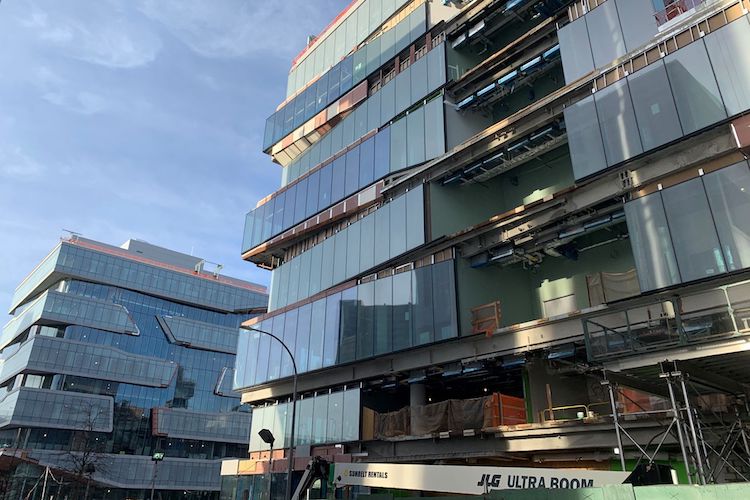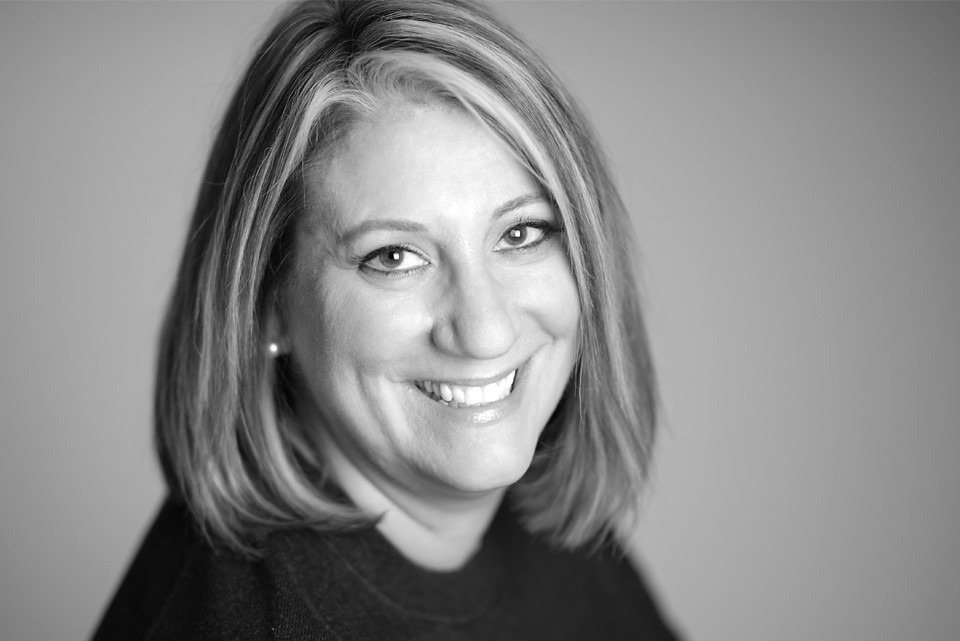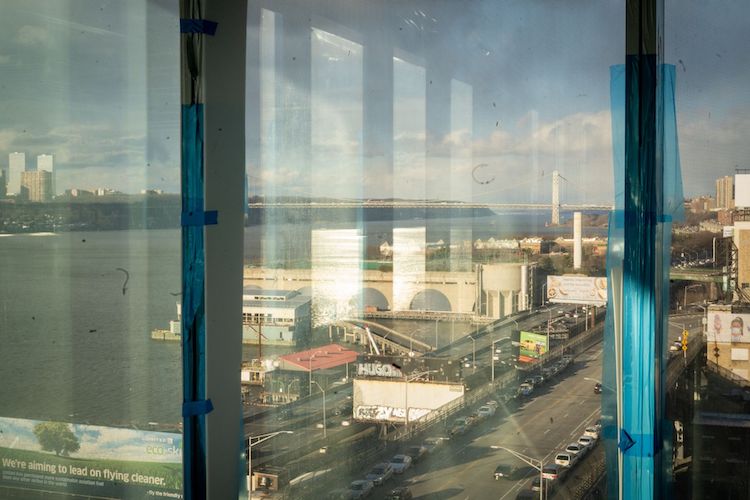
Columbia Business School’s new campus.
What was the need in 2001 for a more global approach to an EMBA?
Our dean at the time was Meyer Feldberg, and he and our board of overseers felt strongly that Columbia Business School needed a presence abroad. At the time, I think Wharton had a campus in Paris, Chicago may have had a Barcelona campus. And our dean said, “we need this.” Columbia has always been known for a very international alumni base.
He talked to the dean of the London Business School in the late 90s, during the dot.com boom and all of that.They landed upon this program where students travel back and forth between the two campuses in London and New York For the whole program, and where they get degrees from both schools.
It’s really been a very natural and nice collaboration. It’s something that we’ve really enjoyed, and it’s enjoyed a lot of success.
What’s the demographic breakdown of that program? Is it like half U.S. students, half international?

Kelley Martin Blanco
I call that program authentically global. Actually, in the words of our former dean Feldberg, who loved the word quintessential, EMBA Global is quintessentially global. It truly draws from students from all over the world.
A little less than half are drawn from North America and South America, and then the rest are from all over. What’s cool about it is they’re authentically on two different campuses. So it’s not that Columbia has a campus in London. Half the time is spent at London Business School, with London Business School professors – that perspective, that vibe and feel. And half their time is at Columbia Business School with our professors, our campus, our vibe and feel. It’s a really unique mix, a unique education from our faculties, but also from each other.
Being a leader and an innovator, has Columbia looked at different delivery models, say in online or hybrid formats?
So, obviously, we were all forced to consider that space during the pandemic in a way that we never had anticipated. I have to say, I’ll give us credit, we did it quickly. We got up and running and we instituted online very, very quickly in a way that we never had before. Then hybrid after that. We had students coming on to campus in limited ways in the fall of 2020. We didn’t dip the toe in, we took a big deep dive into hybrid.
As for now, students want to be back in the classroom. The faculty wants to be back in the classroom. And oh, by the way, we opened a brand new campus in January of this year. For us, that’s the focus, it’s all about being in our new Manhattanville campus buildings and getting those up and running. Students are loving being back all together in person.
All that said, certainly, it gave us a new perspective and new toolkit that we could use in the future. We will continue to think about that and how we would want to implement that in some kind of a limited way. We have a foundation we didn’t have pre-pandemic.
When Wharton announced its Global EMBA that would be 75% online, I imagine it made some schools in your tier kind of raise your eyebrows. Was that surprising or interesting to you?
It was surprising. It was surprising to me that Wharton would not only get into the global space in EMBA, but online at the same time. For us, having been in the global space for 20 years now, there’s appeal to some students to being online. But there’s just no getting around the power of the connections of being in the classroom together as students, and being in the classroom with your faculty member. It can’t be replaced with Zoom.
Zoom is magical in so many ways, but it cannot replace that. Our global students were the most vocal about wanting to be together.
What do you think are the differentiators for the Columbia EMBA?
Number one is our location in New York. Executive MBA students are working by definition and requirement. For our students, the ability to work in New York, immerse themselves in classes on the weekends, yet still be able to go home to their families and their lives is very important.
Another aspect of that is they can take advantage of opportunities on campus during the week if they choose – an evening class, a guest speaker, or get together with their learning team. Of course, we’re lucky because we have adjunct professors who are leaders in industry who can hop in a cab and come up and offer their perspective.
A second advantage is our size. We are one of the largest MBA programs, bringing in 350 students a year. Because of that we can offer a lot in the way of electives; we give our students a lot of choice. And we have enough students that we know that we’ll have some efficiency. Part of that is every student gets one international seminar as a part of their tuition, so we offer the choice of five international seminars as opposed to the whole class going into one place. There is some power in that scale that benefits the students’ experience.

The view from a classroom in David Geffen Hall, one of two buildings on CBS’ new Manhattanville campus.
Besides the sponsorship aspect, how have EMBA students changed over the years you’ve been with the program?
Students are a reflection of what’s going on – where they’re coming from and what they want out of the MBA. We still draw from the financial services industry pretty heavily, but also health care and consulting. Entrepreneurial interest has been on the rise over the past 10 years.
I think what’s going to be interesting is to see how the pandemic changes our students’ aspirations, how it changes what they want to get out of the MBA, what they want to do after the MBA and so on. I think that’s yet to be seen.
What are your application and enrollment trends? Any notable changes?
Our fluctuation, for as long as we have the data, is less than 10%. So we’re lucky. I know having been on the board of EMBAC, I know that is not the case for a lot of schools. For a number of reasons – our New York location, the quality of our program, our reputation and longevity – we just don’t see big swings.
What are some opportunities and challenges you are watching for the future?
I think it’s mainly opportunities that we’re looking at. I feel like we’ve had so many challenges the last few years that we don’t want to think about them too much right now. We’re just looking to the future. We’re past the challenge of opening our new building, we’re in it, and I think we just want to see what kind of interesting stuff is going to come from our faculty and our students.
We are naturally innovators in the space, so: What are we going to come up with next? What might we want to launch?
What have you been hearing from students about the new building?
They love it. It’s beautiful. For us, it’s exciting because it was in the planning for a long, long time – 13 years at least. We’ve got a courtyard in between the two buildings, we have a view of the Hudson River, you can smell the Dinosaur Bar-B-Que in the background. That’s what strikes me because fall is in the air and I’m smelling this wood burning stove.
We’re not far from Columbia’s main campus, but we really have created a nice little campus for ourselves. It has so much beautiful light because it’s all glass, and we’re just used to everything being so old at Columbia. It’s fresh and new, and has all the best technology. We are really enjoying it.
DON’T MISS THESE STORIES IN OUR EMBA SPOTLIGHT SERIES:





Questions about this article? Email us or leave a comment below.